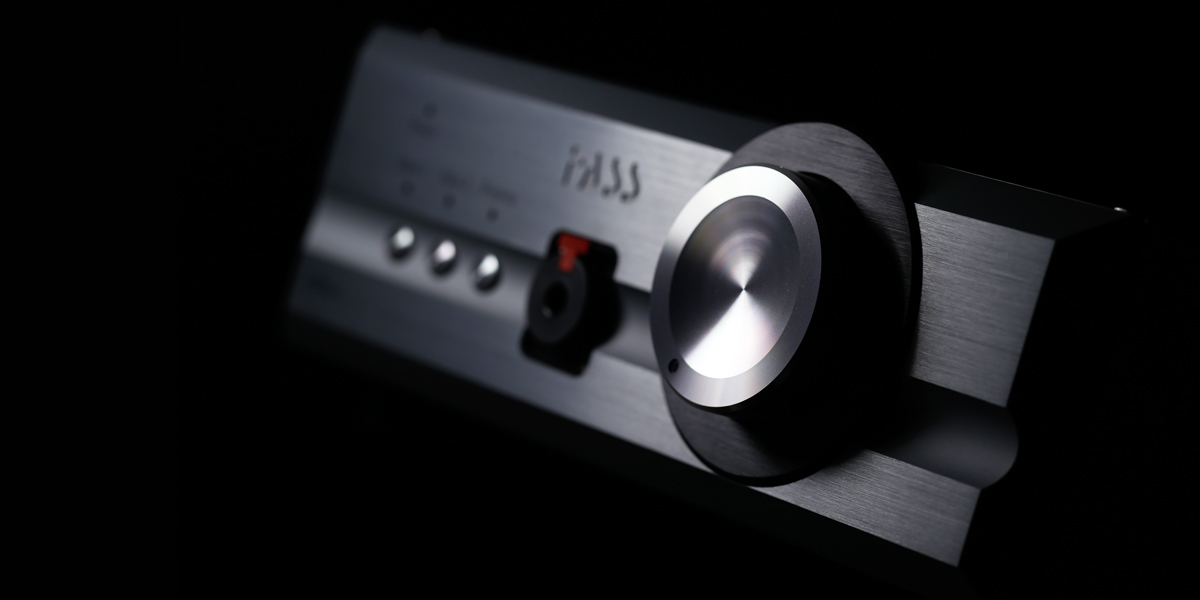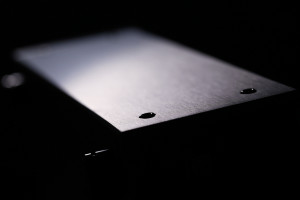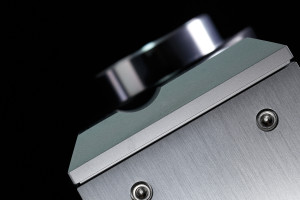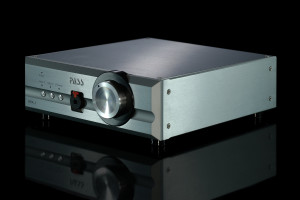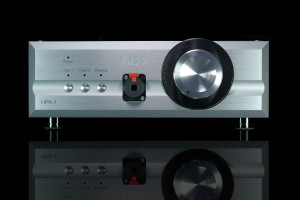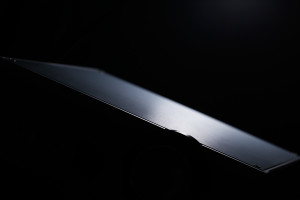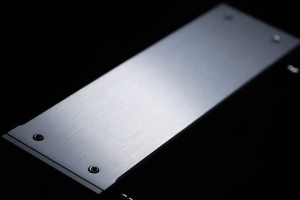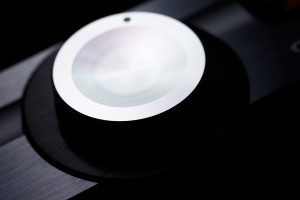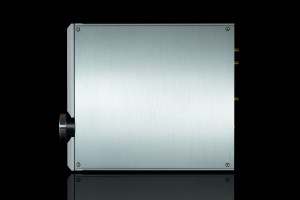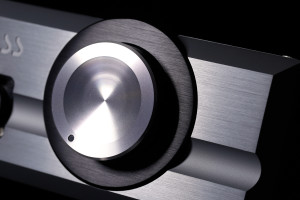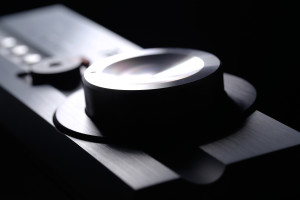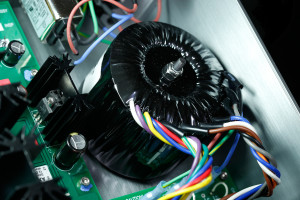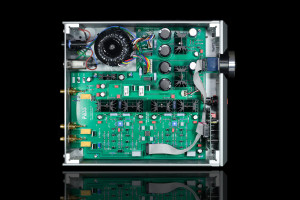To say that headphones are popular these days is a big understatement. To call ’em enormously popular is more like it. These highly personal products can sound grand, are oftentimes luxurious and expensive and as such they need proper company. Hence high quality amplifiers are the obvious next step once money on a pair of decent cans is spent already. And one knows that this headphones related trend is the real deal when legendary companies jump on-board. They do follow indeed and Pass Labs HPA-1 is a perfect example. Enjoy!
Introduction
Not that long ago, neither headphone amplifiers nor headphones were treated as seriously as regular stereo oriented stuff of pricey kind. This changed, though. It’s quite visible that TOTL headphones’ asking jumped significantly during last years, models with the flagship status from a decade ago barely squeeze into mid tier now. These days a true upper echelon set of cans is sold for no less than $3’000. Picture Audeze LCD-4, HiFiMAN HE-1000 V2, Focal Utopia and the lot and these cover only dynamic and planar fields. Electrostatic products of this sort are something completely different yet usually very costly as well. And there’s one very obvious succession of this situation, headphone amplifiers can now be very costly as well. 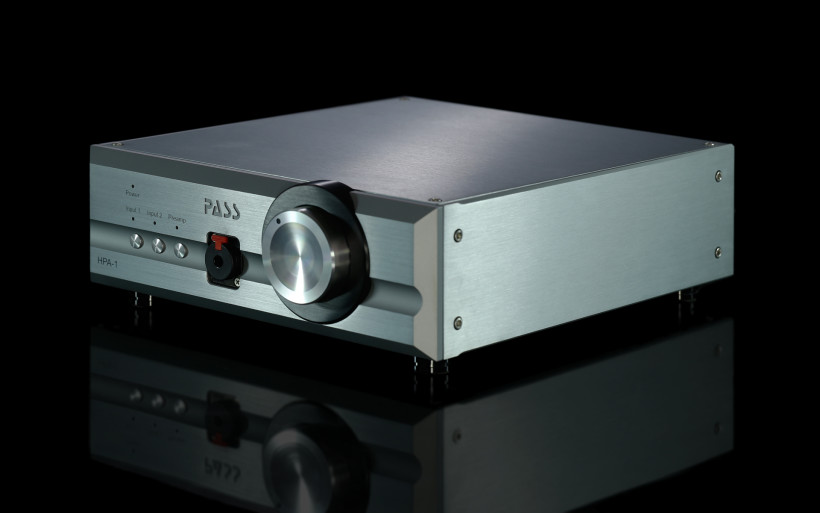 Now to see a $10’000 headphone amp is nothing out of ordinary, i.e. Woo Audio WA234 monoblock monster is sold for $15’900. To be fair, it’s a rare thing to see an amp of asking this high. Still, there are many headphone related options of this sort placed somewhere in the $5’000 – $10’000 range. Even by today’s standards that’s a lot of money, yet this is not a surprise. Hardly any in fact. In order to squeeze every bit of performance out of one’s favorite and posh cans, he has to have everything else of quality as well. Needless to say, quality in audio usually doesn’t come cheap. But purely from manufacturer’s perspective, it simply ads up to jump onto that pricey wagon no matter the angle. The upshot of this headphones related craze is the sound quality. It increased heavily over the years. One pays a lot and proportionally as much in return is to be expected. And the more options available, well, the better for a consumer.
Now to see a $10’000 headphone amp is nothing out of ordinary, i.e. Woo Audio WA234 monoblock monster is sold for $15’900. To be fair, it’s a rare thing to see an amp of asking this high. Still, there are many headphone related options of this sort placed somewhere in the $5’000 – $10’000 range. Even by today’s standards that’s a lot of money, yet this is not a surprise. Hardly any in fact. In order to squeeze every bit of performance out of one’s favorite and posh cans, he has to have everything else of quality as well. Needless to say, quality in audio usually doesn’t come cheap. But purely from manufacturer’s perspective, it simply ads up to jump onto that pricey wagon no matter the angle. The upshot of this headphones related craze is the sound quality. It increased heavily over the years. One pays a lot and proportionally as much in return is to be expected. And the more options available, well, the better for a consumer.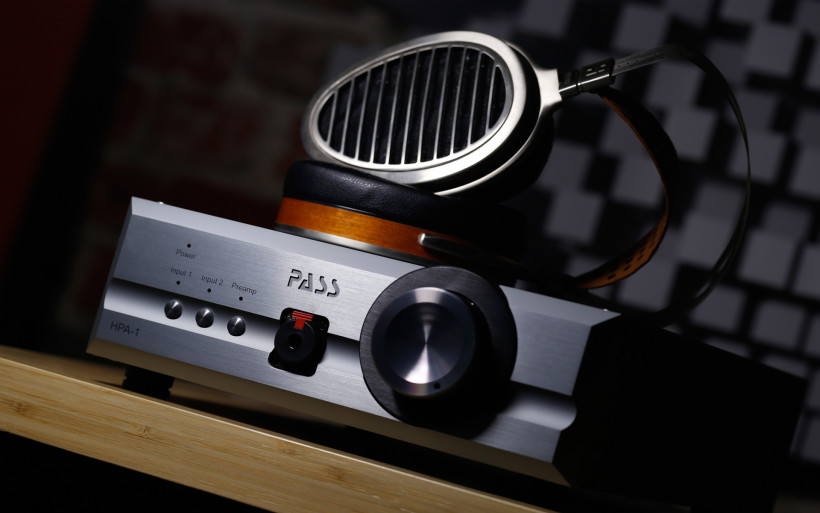 Pass Labs is one of those companies that doesn’t need any introductory words. This creation of Nelson Pass is too well-known among enthusiasts to write something new. Let me just say that products by said man and his team are liked very much and rightfully so. This scribe hasn’t yet had a chance to audition any of Pass Labs creations within his own four walls, yet enjoyed speakers powered by them them during a number of audio events. Let’s add FirstWatt, the so-called kitchen table of Mr Pass. His F7 model left me utterly impressed, became my regular work tool with high efficiency loads and this status quo hasn’t changed one bit since early 2016. Naturally it comes as no surprise that Pass Labs HPA-1 headphone amplifier was anticipated by many enthusiasts and yours truly among them. The very first headfi oriented product from a legendary company known for very likable discrete class A topology? Is there any aficionado who’d say no to that?
Pass Labs is one of those companies that doesn’t need any introductory words. This creation of Nelson Pass is too well-known among enthusiasts to write something new. Let me just say that products by said man and his team are liked very much and rightfully so. This scribe hasn’t yet had a chance to audition any of Pass Labs creations within his own four walls, yet enjoyed speakers powered by them them during a number of audio events. Let’s add FirstWatt, the so-called kitchen table of Mr Pass. His F7 model left me utterly impressed, became my regular work tool with high efficiency loads and this status quo hasn’t changed one bit since early 2016. Naturally it comes as no surprise that Pass Labs HPA-1 headphone amplifier was anticipated by many enthusiasts and yours truly among them. The very first headfi oriented product from a legendary company known for very likable discrete class A topology? Is there any aficionado who’d say no to that?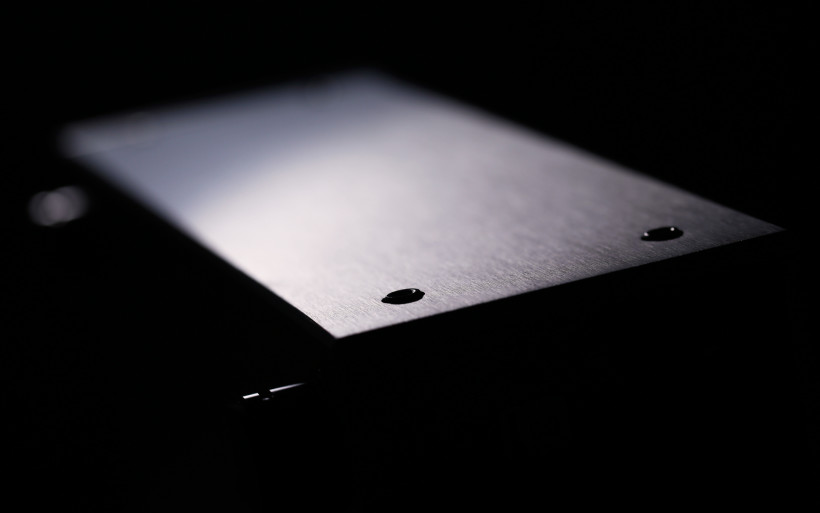 There’s one ‘catch’, though. Srajan’s own HPA-1 writing says that this model isn’t a creation of neither Mr Pass as power amplifiers are his thing, nor Wayne Colburn (pre-amplifiers and phonostages) or Desmond Harrington (industrial design). In case of this product in particular, there’s another name at works, Jam Somasundram is our man. Previously he worked for three years as the director of engineering in Cary Audio and some time ago he transitioned to Pass Labs. Both him and Nelson Pass know each other for 35 years or so. That’s a long time to wrap one engineer’s head around other’s mindset.
There’s one ‘catch’, though. Srajan’s own HPA-1 writing says that this model isn’t a creation of neither Mr Pass as power amplifiers are his thing, nor Wayne Colburn (pre-amplifiers and phonostages) or Desmond Harrington (industrial design). In case of this product in particular, there’s another name at works, Jam Somasundram is our man. Previously he worked for three years as the director of engineering in Cary Audio and some time ago he transitioned to Pass Labs. Both him and Nelson Pass know each other for 35 years or so. That’s a long time to wrap one engineer’s head around other’s mindset.
Build
These days vanilla headphone amplifiers aren’t as popular as years back. Integrated solutions, namely DAC/headfi/preamp combos became a trend apparently and replaced them to at least some degree. Convenience is the key word here, manufacturers exploit that by delivering what’s hot and that’s understandable. Still, there are operations known for doing their own thing and Pass Labs is one shiny example of the good ‘ol American way. This company from Auburn in California is into discrete class A products of purely analogue sort, exceptionally robust no-frills enclosures and great sound above all else. Needless to say, its HPA-1 deck fits this description perfectly. At the same time it’s the very first Pass Labs headphone amplifier and this fact alone makes things additionally very interesting.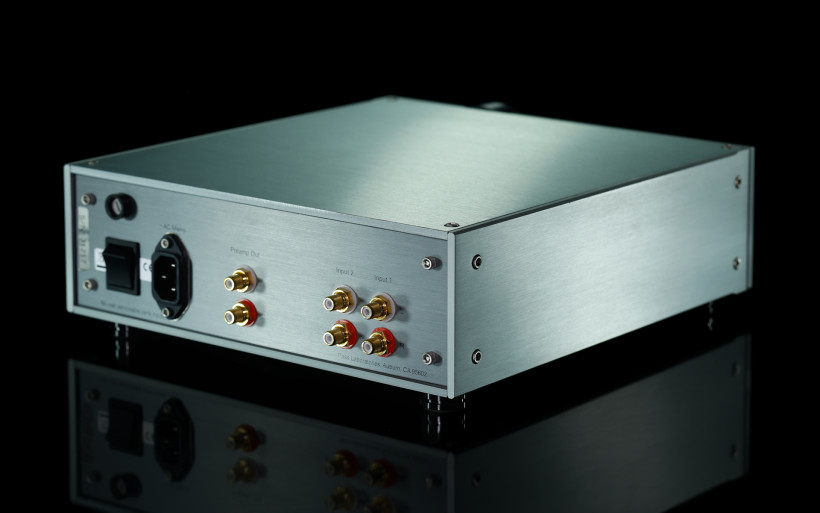 Pass Labs HPA-1 is a full-fledged headphone amplifier of (WxDxH) 28×11.5x33cm dimensions and 6.35 kilograms weight. It’s big, heavy and hot. Discrete class A circuitry demands good heat dissipation, hence massive enclosure is in order. The product is of wide bandwidth sort, its FR is 10 – 200 000Hz, which is rather uncommon. Output power into 20Ω and 300Ω loads is 3500 and 200mW respectively. THD + noise is < 0.005% (@1V), input impedance is 50 000KΩ and output impedance sits below 2Ω. Gain and power consumption are 8dB and 6W respectively.
Pass Labs HPA-1 is a full-fledged headphone amplifier of (WxDxH) 28×11.5x33cm dimensions and 6.35 kilograms weight. It’s big, heavy and hot. Discrete class A circuitry demands good heat dissipation, hence massive enclosure is in order. The product is of wide bandwidth sort, its FR is 10 – 200 000Hz, which is rather uncommon. Output power into 20Ω and 300Ω loads is 3500 and 200mW respectively. THD + noise is < 0.005% (@1V), input impedance is 50 000KΩ and output impedance sits below 2Ω. Gain and power consumption are 8dB and 6W respectively.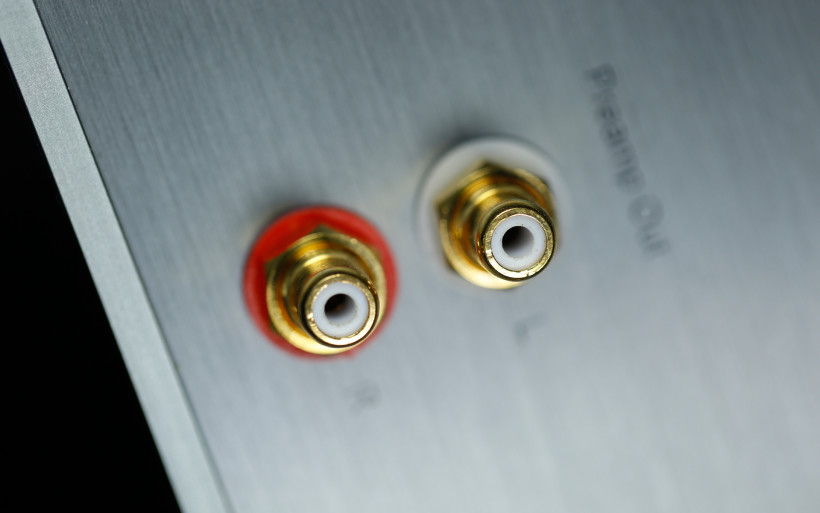 Pass Labs HPA-1 is visually quite intimidating. Even though to see a transistors based headfi product this big and heavy is a rarity, its size and weight are one thing. The other one is said deck’s enclosure itself. That’s no artsy-fartsy but robust and industrial piece of hardware right there. Front plate’s edges are trimmed, whereas enclosure’s walls are bolted via perfectly visible hex screws. Point being, Pass Labs HPA-1 isn’t visually shy or delicate, on the contrary. It’s obvious it was built to last, just as other products from the same manufacturer. Assembly of this sort screams ‘quality’ as loud as ‘honesty’. Our machine is visually very honest and at the same time subjectively lovely. There’s nothing tacky about it. Every piece of anodized enclosure connects to its neighbors perfectly and the overall feeling is that HPA-1 is exceptionally solid. Build quality this decent and attention to details this meticulous aren’t seen very often. The trick is to make visually plain product tasty enough for a journalist to gush over it. Needless to say, our American hero nailed it.
Pass Labs HPA-1 is visually quite intimidating. Even though to see a transistors based headfi product this big and heavy is a rarity, its size and weight are one thing. The other one is said deck’s enclosure itself. That’s no artsy-fartsy but robust and industrial piece of hardware right there. Front plate’s edges are trimmed, whereas enclosure’s walls are bolted via perfectly visible hex screws. Point being, Pass Labs HPA-1 isn’t visually shy or delicate, on the contrary. It’s obvious it was built to last, just as other products from the same manufacturer. Assembly of this sort screams ‘quality’ as loud as ‘honesty’. Our machine is visually very honest and at the same time subjectively lovely. There’s nothing tacky about it. Every piece of anodized enclosure connects to its neighbors perfectly and the overall feeling is that HPA-1 is exceptionally solid. Build quality this decent and attention to details this meticulous aren’t seen very often. The trick is to make visually plain product tasty enough for a journalist to gush over it. Needless to say, our American hero nailed it.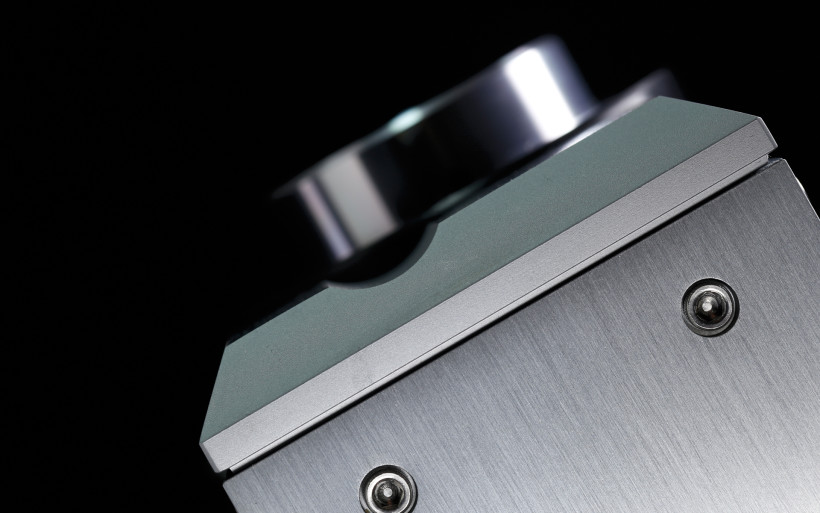 Latest Pass Labs deck’s front easily shows to which manufacturer’s portfolio it belongs. Big and very smooth aluminium volume knob fitted into massive black rounding made from the very same material? This simply can’t be mistaken with anything else than one well-known Auburn based operation. The model’s name is visible in the lower left corner, round recession which flows through the whole front is a bit above. Three very clicky buttons with blue LEDs are placed in this element in the following order: Input 1, Input 2 and Preamp. Additional diode slightly above the first one indicates whether the device is on. Further to the right there’s a 6,3mm locking socket by Neutrik and… nothing else. Yes, no 4-pin or 2 x 3-pin XLRs or 3,5mm AUX, nada. There’s a CNC-milled Pass logo above headfi out, aforementioned volume wheel is next in line and that’s it. By today’s standards, loadout this simplistic is very unusual and HPA-1 rear is no different. It sports an on/off switch, IEC socket, a self-replaceable fuse, one RCA based preamplifier output and two inputs of the same sort. The product sits on four aluminium feet with rubber washers and is anodized from bottom to the very top.
Latest Pass Labs deck’s front easily shows to which manufacturer’s portfolio it belongs. Big and very smooth aluminium volume knob fitted into massive black rounding made from the very same material? This simply can’t be mistaken with anything else than one well-known Auburn based operation. The model’s name is visible in the lower left corner, round recession which flows through the whole front is a bit above. Three very clicky buttons with blue LEDs are placed in this element in the following order: Input 1, Input 2 and Preamp. Additional diode slightly above the first one indicates whether the device is on. Further to the right there’s a 6,3mm locking socket by Neutrik and… nothing else. Yes, no 4-pin or 2 x 3-pin XLRs or 3,5mm AUX, nada. There’s a CNC-milled Pass logo above headfi out, aforementioned volume wheel is next in line and that’s it. By today’s standards, loadout this simplistic is very unusual and HPA-1 rear is no different. It sports an on/off switch, IEC socket, a self-replaceable fuse, one RCA based preamplifier output and two inputs of the same sort. The product sits on four aluminium feet with rubber washers and is anodized from bottom to the very top.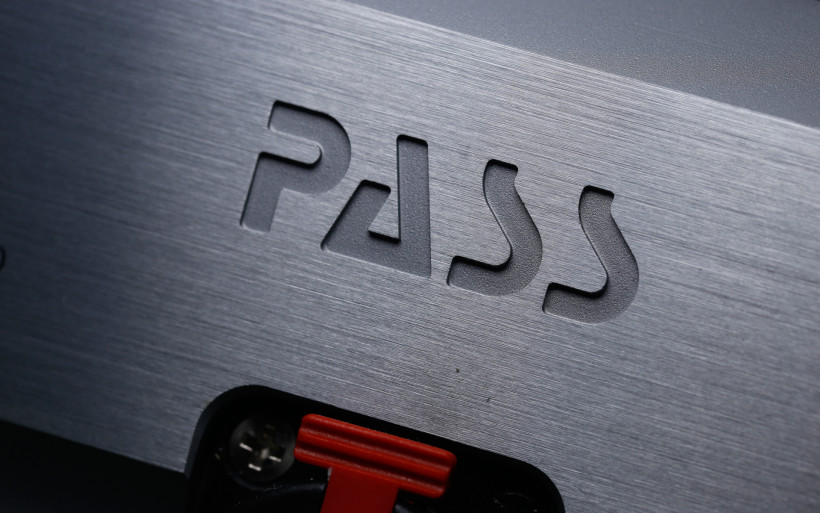 Pass Labs HPA-1 has nothing to do with digital domain, it’s purely analogue. Neither it sports d/a converter on-board nor a fancy display. Heck, not even a digitally controlled RC as there’s none at all to begin with. Our American machine was built to operate reliably regardless of given load and to sound as good as possible within strict manufacturing cost. That was the goal. At the same time it was assembled in Auburn and is in fact the most affordable product in Pass Labs portfolio. In other words, a compromise had to be made in order to have its asking within mortal people’s reach. And as the very first headfi oriented Pass Labs product, HPA-1 was presumably made to see how it’ll fare against other carnivorous residents of the very same and already bloody ocean. Still, it’s not a regular headphone deck and here’s the major twist: it sports a killer preamp on-board. The latter function isn’t merely an addition to make the American package more appealing. That’s an understatement. HPA-1 is actually two devices of the same heavyweight caliber put inside one chassis. And that’s done not by a mere coincidence, that was one of key design goals according to Mr Somasundram. To put it in even simpler words, he wanted to kill two birds with just one stone right from the very beginning.
Pass Labs HPA-1 has nothing to do with digital domain, it’s purely analogue. Neither it sports d/a converter on-board nor a fancy display. Heck, not even a digitally controlled RC as there’s none at all to begin with. Our American machine was built to operate reliably regardless of given load and to sound as good as possible within strict manufacturing cost. That was the goal. At the same time it was assembled in Auburn and is in fact the most affordable product in Pass Labs portfolio. In other words, a compromise had to be made in order to have its asking within mortal people’s reach. And as the very first headfi oriented Pass Labs product, HPA-1 was presumably made to see how it’ll fare against other carnivorous residents of the very same and already bloody ocean. Still, it’s not a regular headphone deck and here’s the major twist: it sports a killer preamp on-board. The latter function isn’t merely an addition to make the American package more appealing. That’s an understatement. HPA-1 is actually two devices of the same heavyweight caliber put inside one chassis. And that’s done not by a mere coincidence, that was one of key design goals according to Mr Somasundram. To put it in even simpler words, he wanted to kill two birds with just one stone right from the very beginning. In order to get Pass Labs HPA-1 going, one has to flip a switch on its rear. At first the product is in mute state, which is shown by flickering diode on its front. After 20 seconds our device is fully operable. This is done via custom-programmed processor. HPA-1 was designed to stay on the whole time. The operation itself is very simple, just pick one of two desired inputs via button on the front and you’re good. If a preamplifier option is needed, one ‘Preamp’ button press quickly disconnect the product’s 6,3 mm out. It works instantly. Let’s take a peek under the hood now. HPA-1 is a single-ended, fully discrete and low-feedback design. There’s only one op-amp in the whole circuit, yet it’s a DC servo. The power supply looks serious. Unusually tall, double Faraday-screened low-noise toroidal transformer feeds four capacitors (40’000 µF in total) and then discreet voltage regulators, each loaded with its own heatsink. The amplifier circuitry is based on J-Fets by Toshiba in the input stage (voltage gain) and Fairchilds Mosfets in the directly-coupled Class A output stage (current drive). Very well-known known Alps company is responsible for volume pot and the whole signal/PSU circuitry is fitted onto one large PCB.
In order to get Pass Labs HPA-1 going, one has to flip a switch on its rear. At first the product is in mute state, which is shown by flickering diode on its front. After 20 seconds our device is fully operable. This is done via custom-programmed processor. HPA-1 was designed to stay on the whole time. The operation itself is very simple, just pick one of two desired inputs via button on the front and you’re good. If a preamplifier option is needed, one ‘Preamp’ button press quickly disconnect the product’s 6,3 mm out. It works instantly. Let’s take a peek under the hood now. HPA-1 is a single-ended, fully discrete and low-feedback design. There’s only one op-amp in the whole circuit, yet it’s a DC servo. The power supply looks serious. Unusually tall, double Faraday-screened low-noise toroidal transformer feeds four capacitors (40’000 µF in total) and then discreet voltage regulators, each loaded with its own heatsink. The amplifier circuitry is based on J-Fets by Toshiba in the input stage (voltage gain) and Fairchilds Mosfets in the directly-coupled Class A output stage (current drive). Very well-known known Alps company is responsible for volume pot and the whole signal/PSU circuitry is fitted onto one large PCB.
Sound
As per usual, the obvious source pick was LampizatOr Golden Gate (Psvane WE101D-L + KR Audio 5U4G Ltd. + TAIV VC-03 attenuation), Asus UX305LA served as a transport and iFi Audio iPurifier2 was used between ’em. My main amplifier was Sanders Sound Systems Magtech and speakers used were Boenicke Audio W8. Trilogy 925 was off the table this time, simply because there’s no way to bypass its volume control. In any case, the initial goal was to find out how well HPA-1 will perform against Sanders Sound Systems preamplifier and Golden Gate’s volume control. Similar scenario was repeated in the other room. Denon PMA-1510AE, Boenicke Audio W5 and Xonar Essence III were used there. And finally, once the preamplification matter was sorted, HiFiMAN HE-1000 helped me to witness what kind of a headphones oriented product HPA-1 is. Here’s the tale.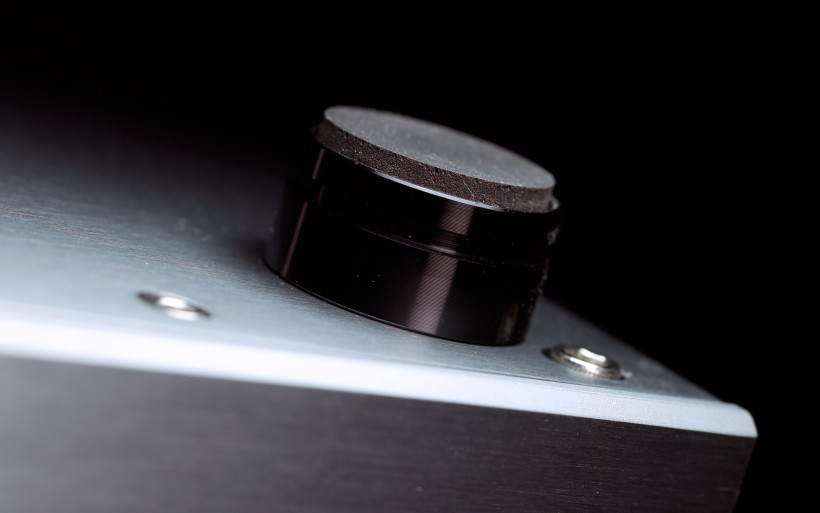 Let’s kick it off with the story about my personal environment. The very first order of business was to find out what all the preamplifier fuss is all about. My far from optimal home setup include Xonar Essence III and Denon PMA-1510AE. These temporary solutions don’t do justice to Boenicke W5, that’s a given. Yet the upshot is that volume control can be easily bypassed in both and naturally HPA-1 has found its place between ’em. And since my home rig is of nearfield sort, HPA-1’s volume knob was within my reach easily. What happened next was unexpected. At first I thought that this will be rather casual and easygoing audition in ‘a bit more here, a bit less there’ fashion, just to get myself mildly familiarized with the American deck before setting it up in the main setup. Wrong, it was anything but. HPA-1 instantly and swiftly revealed what it can do.
Let’s kick it off with the story about my personal environment. The very first order of business was to find out what all the preamplifier fuss is all about. My far from optimal home setup include Xonar Essence III and Denon PMA-1510AE. These temporary solutions don’t do justice to Boenicke W5, that’s a given. Yet the upshot is that volume control can be easily bypassed in both and naturally HPA-1 has found its place between ’em. And since my home rig is of nearfield sort, HPA-1’s volume knob was within my reach easily. What happened next was unexpected. At first I thought that this will be rather casual and easygoing audition in ‘a bit more here, a bit less there’ fashion, just to get myself mildly familiarized with the American deck before setting it up in the main setup. Wrong, it was anything but. HPA-1 instantly and swiftly revealed what it can do.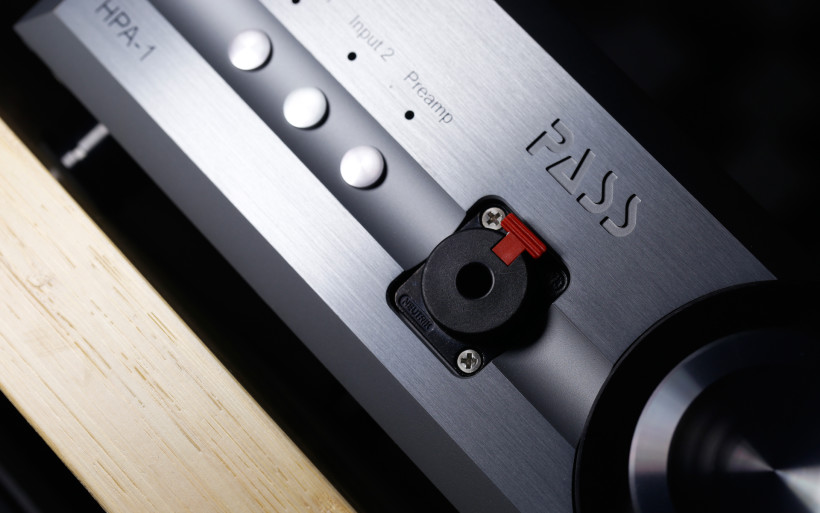 Authority, that’s the main angle, HPA-1 brought lots of it to the table. Before that happened, I thought that my home setup does nice job in this regard. Once W5 has sufficient power on tap, that’s the usual outcome. Still, HPA-1 elevated this aspect to a new, much higher level. And ‘authority’ in this very context should be understood as grand control over load, hence something amplifiers are responsible for. With HPA-1 the music wasn’t neither faster nor slower, but the sensation of much tighter grip over transducers was omnipresent. This translated to audibly swifter, yet not leaner bass. On the contrary in fact, it got more muscular and texturally more generous and complex, with far deeper downstairs reach. This was a major surprise as usually when drastic changes of this sort happen, a trade-off or two follow. Not this time, though. It’s safe to say that everything was delivered; definition, punch, saturation, low end extension… yet nothing was taken in return. And all that was very audible in my greatly limited home office.
Authority, that’s the main angle, HPA-1 brought lots of it to the table. Before that happened, I thought that my home setup does nice job in this regard. Once W5 has sufficient power on tap, that’s the usual outcome. Still, HPA-1 elevated this aspect to a new, much higher level. And ‘authority’ in this very context should be understood as grand control over load, hence something amplifiers are responsible for. With HPA-1 the music wasn’t neither faster nor slower, but the sensation of much tighter grip over transducers was omnipresent. This translated to audibly swifter, yet not leaner bass. On the contrary in fact, it got more muscular and texturally more generous and complex, with far deeper downstairs reach. This was a major surprise as usually when drastic changes of this sort happen, a trade-off or two follow. Not this time, though. It’s safe to say that everything was delivered; definition, punch, saturation, low end extension… yet nothing was taken in return. And all that was very audible in my greatly limited home office.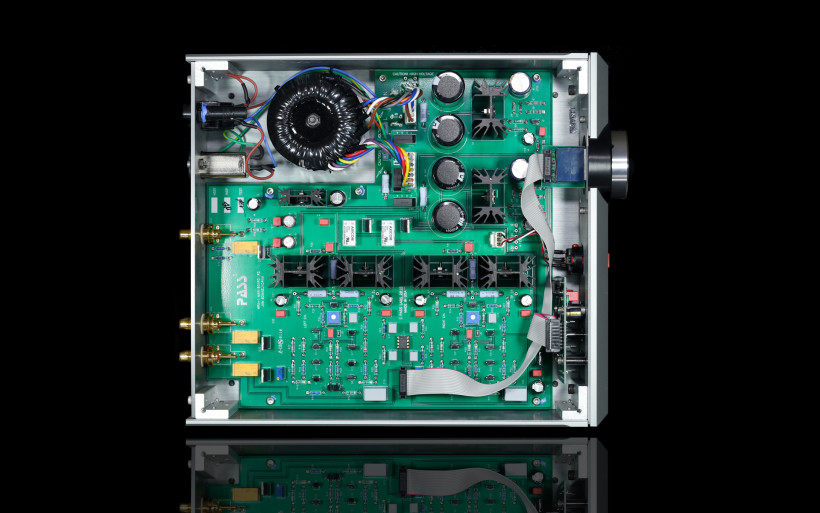 In order to confirm my initial findings, HPA-1 was removed from the chain. Not only bass, but everything above got much thinner and dullness became a part of the show in an instant. The Pass Labs deck not only boosted bassy experience, but also added tangible element to everything above. Both male and female vocals became more present and guitars gained additional thickness. Picture a thin sketch on a piece of paper finally coloured, yet with all its outlines not only intact, but additionally emphasized. The outcome was very vivid and clear at the same time. That was the HPA-1 input exactly, it simply made the music gutsier, weightier, more saturated in general and authoritative too. It elevated the experience by quite a lot.
In order to confirm my initial findings, HPA-1 was removed from the chain. Not only bass, but everything above got much thinner and dullness became a part of the show in an instant. The Pass Labs deck not only boosted bassy experience, but also added tangible element to everything above. Both male and female vocals became more present and guitars gained additional thickness. Picture a thin sketch on a piece of paper finally coloured, yet with all its outlines not only intact, but additionally emphasized. The outcome was very vivid and clear at the same time. That was the HPA-1 input exactly, it simply made the music gutsier, weightier, more saturated in general and authoritative too. It elevated the experience by quite a lot.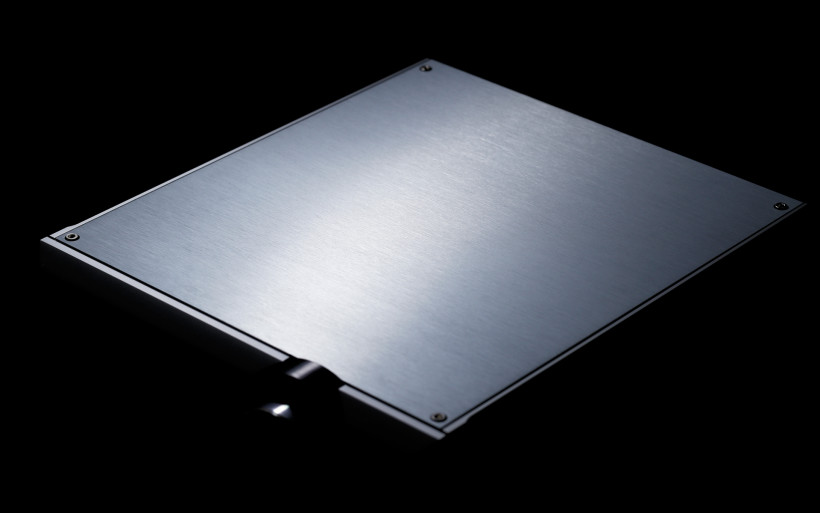 The American machine didn’t influence the amount of highs or lows but made ’em more present and less watery. Some individuals mistakenly think that Class A bias makes the outcome fuzzier, yet there’s nothing of this sort about HPA-1 performance. Nothing at all. When saturation and control meet, temperature higher than usual won’t blur the image, clarity will still be a part of the show. And instruments slightly bigger and more tangible with the American deck in the audio chain, simply made the outcome far more coherent than without it. The sense of space in front of my very seat was also better. It might seem that airier approach is a given in the latter scenario, yet it’s the exact opposite, presumably because of HPA-1 noise floor and well-made design in general. I can’t single out the exact reason. But with said machine on-board, imaging grew bigger and was more lifelike and wet in general, yet instruments’ separation and layering were top notch as well. The thing is that this aspect had additive value, the above-mentioned authority was in the spotlight the whole time.
The American machine didn’t influence the amount of highs or lows but made ’em more present and less watery. Some individuals mistakenly think that Class A bias makes the outcome fuzzier, yet there’s nothing of this sort about HPA-1 performance. Nothing at all. When saturation and control meet, temperature higher than usual won’t blur the image, clarity will still be a part of the show. And instruments slightly bigger and more tangible with the American deck in the audio chain, simply made the outcome far more coherent than without it. The sense of space in front of my very seat was also better. It might seem that airier approach is a given in the latter scenario, yet it’s the exact opposite, presumably because of HPA-1 noise floor and well-made design in general. I can’t single out the exact reason. But with said machine on-board, imaging grew bigger and was more lifelike and wet in general, yet instruments’ separation and layering were top notch as well. The thing is that this aspect had additive value, the above-mentioned authority was in the spotlight the whole time.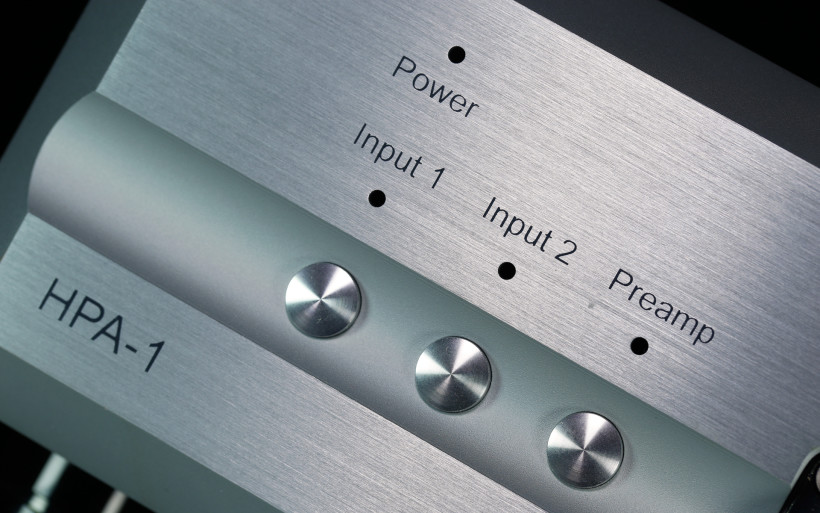 Past the exercise described above, it was time to move to a bigger room with more expensive and revealing setup. What I didn’t know back then was that the dense, powerful, authoritative and overall sophisticated input HPA-1 greeted me with within my privy environment will be heard in every upcoming scenario. And having said that, all virtues this review’s hero sport were heard via headphones and my main system loud and clear. This writing could’ve been finished in this very place and have properly informative value nonetheless, I think. Still, to have a headphone amplifier and to not use it as such would be a crime.
Past the exercise described above, it was time to move to a bigger room with more expensive and revealing setup. What I didn’t know back then was that the dense, powerful, authoritative and overall sophisticated input HPA-1 greeted me with within my privy environment will be heard in every upcoming scenario. And having said that, all virtues this review’s hero sport were heard via headphones and my main system loud and clear. This writing could’ve been finished in this very place and have properly informative value nonetheless, I think. Still, to have a headphone amplifier and to not use it as such would be a crime.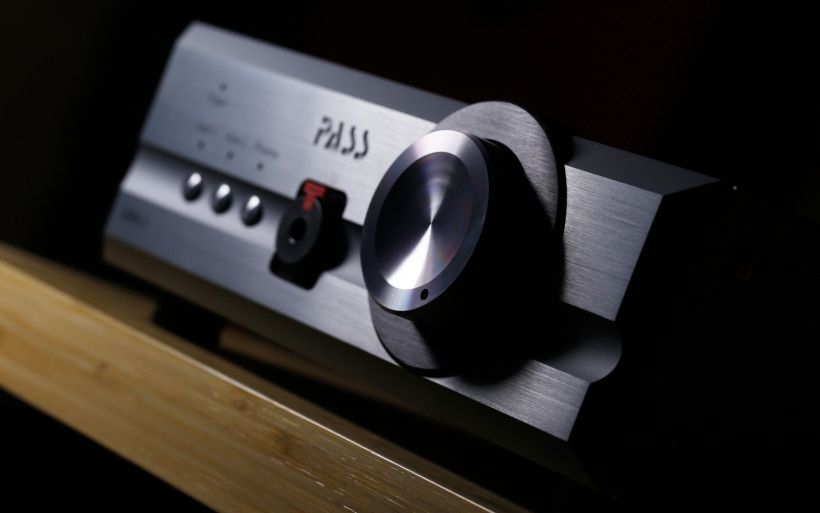 The second order of business was my main room. LampizatOr Golden Gate and its TAIV VC-03 were already there, so was American Magtech power amplifier and a pair of Boenicke W8 speakers. Here HPA-1 did the very same things with the sound as in my smaller room. Both my daily sources – Golden Gate and DP-777SE – make the sound audibly slimmer in comparison to vast majority of standalone preamplifiers I’ve tried. Usually that’s the only trade-off, which can be situational as some combinations benefit from mild liposuction. HPA-1 is different, though. In comparison to my source’s TAIV VC-03 module, not only additional fat was injected to the music. Already well-driven W8 floorstanders (KR Audio 5U4G rectifier in action) got even more authoritative. Again, it was all about lower reach, rounder yet more powerful punch and elevated texturing. Moving further, sound sources became not bigger, but slightly bulkier, yet vividness increase was noticed as well. This led to greater coherence in front of the listening seat. For the second time it was shown that no air was sucked out of the overall picture, instruments were still finely sketched and separated, layering was intact too. The outcome didn’t get neither glossier nor fuzzier but simply more alive, way less artificial. And all that happened with Golden Gate in single-ended and not balanced mode. The described experience would be presumably even more audible with fully balanced version of HPA-1, that’s my guess.
The second order of business was my main room. LampizatOr Golden Gate and its TAIV VC-03 were already there, so was American Magtech power amplifier and a pair of Boenicke W8 speakers. Here HPA-1 did the very same things with the sound as in my smaller room. Both my daily sources – Golden Gate and DP-777SE – make the sound audibly slimmer in comparison to vast majority of standalone preamplifiers I’ve tried. Usually that’s the only trade-off, which can be situational as some combinations benefit from mild liposuction. HPA-1 is different, though. In comparison to my source’s TAIV VC-03 module, not only additional fat was injected to the music. Already well-driven W8 floorstanders (KR Audio 5U4G rectifier in action) got even more authoritative. Again, it was all about lower reach, rounder yet more powerful punch and elevated texturing. Moving further, sound sources became not bigger, but slightly bulkier, yet vividness increase was noticed as well. This led to greater coherence in front of the listening seat. For the second time it was shown that no air was sucked out of the overall picture, instruments were still finely sketched and separated, layering was intact too. The outcome didn’t get neither glossier nor fuzzier but simply more alive, way less artificial. And all that happened with Golden Gate in single-ended and not balanced mode. The described experience would be presumably even more audible with fully balanced version of HPA-1, that’s my guess.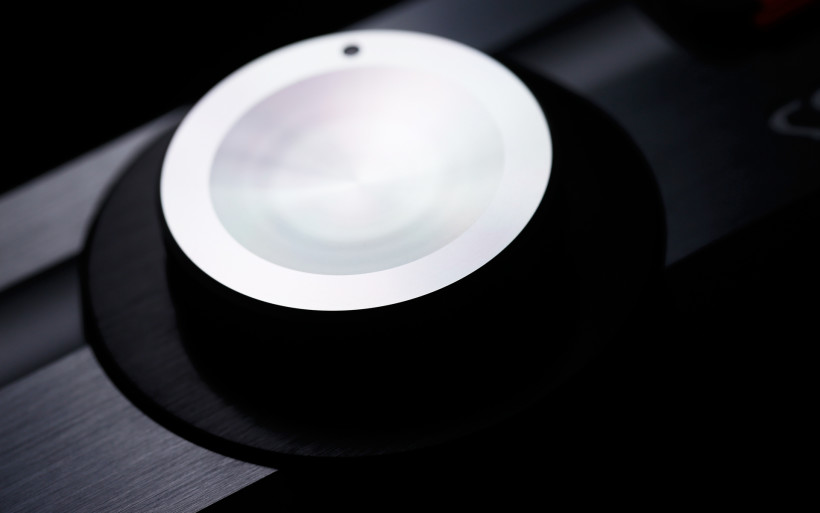 It was time to include the full-fledged Sanders Sound Systems preamplifier of $5’000 ask in the chain. As far as practicals go, namely inputs’ number, digital display and remote control, it had the upper hand over HPA-1. That’s unquestionable. As far as the sound goes, they were different beasts. The use of the former deck also netted heavier outcome in comparison to TAIV VC-03 module, that’s the common ground in both American cases. Still, the product by Roger Sanders was calmer and it sported lesser drive. And it had no character of its own, it simply allowed my source, amp and speakers to do their usual, yet audibly gutsier thing. HPA-1 on the other hand sported proper shove downstairs, again. Not only that, it slightly elevated temperature and smoothness, whereas the outcome was as informative and airy as usual. It made the music subjectively more tangible and enjoyable in the process. I wouldn’t say that it bested its competitor as this wasn’t the case. HPA-1 simply injected some of its own attitude and whether this is desirable or not depends on a scenario. I tend to think that it all comes down to personal preferences more than anything else. I’d stick with Pass, simply because once its major virtue is heard, this deck becomes very addictive.
It was time to include the full-fledged Sanders Sound Systems preamplifier of $5’000 ask in the chain. As far as practicals go, namely inputs’ number, digital display and remote control, it had the upper hand over HPA-1. That’s unquestionable. As far as the sound goes, they were different beasts. The use of the former deck also netted heavier outcome in comparison to TAIV VC-03 module, that’s the common ground in both American cases. Still, the product by Roger Sanders was calmer and it sported lesser drive. And it had no character of its own, it simply allowed my source, amp and speakers to do their usual, yet audibly gutsier thing. HPA-1 on the other hand sported proper shove downstairs, again. Not only that, it slightly elevated temperature and smoothness, whereas the outcome was as informative and airy as usual. It made the music subjectively more tangible and enjoyable in the process. I wouldn’t say that it bested its competitor as this wasn’t the case. HPA-1 simply injected some of its own attitude and whether this is desirable or not depends on a scenario. I tend to think that it all comes down to personal preferences more than anything else. I’d stick with Pass, simply because once its major virtue is heard, this deck becomes very addictive. It was high time to address the headphones related matter. HE-1000 by HiFiMAN and my daily Polish source were used, here with Forza AudioWorks cables. Every HPA-1 feature could’ve been invoked again in one-by-one fashion, yet at this point it seems redundant to repeat the above story. Simply because this deck’s 6,3mm out influence the sound in the same way as its preamp out. And why that’s the case is no mystery, both HPA-1 functions are shared by the same finely made circuitry. It’s much easier to answer what this amp doesn’t do. First of all, it won’t make the sound sharper, whizzier or more artificial than it already is. On the contrary, it will enchant the upstairs department to be smoother and more digestible. HE-1000 don’t have upper FR elevated and our American machine won’t change that. Yet it’ll make it more suave and subtler while maintaining its informational element in check.
It was high time to address the headphones related matter. HE-1000 by HiFiMAN and my daily Polish source were used, here with Forza AudioWorks cables. Every HPA-1 feature could’ve been invoked again in one-by-one fashion, yet at this point it seems redundant to repeat the above story. Simply because this deck’s 6,3mm out influence the sound in the same way as its preamp out. And why that’s the case is no mystery, both HPA-1 functions are shared by the same finely made circuitry. It’s much easier to answer what this amp doesn’t do. First of all, it won’t make the sound sharper, whizzier or more artificial than it already is. On the contrary, it will enchant the upstairs department to be smoother and more digestible. HE-1000 don’t have upper FR elevated and our American machine won’t change that. Yet it’ll make it more suave and subtler while maintaining its informational element in check.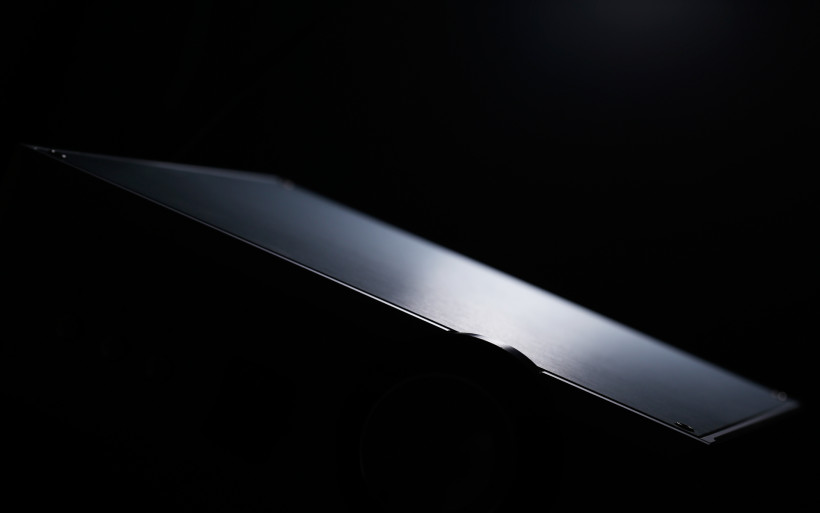 Moving on, HPA-1 won’t increase the warmth present in music by a lot. This naturally happens, yet is not seen as something blunt and obvious but slight. Picture a chef who got undercooked dish to fix. He knows exactly how long temperature treatment has to be and conducted in what way to not damage the meal but make it perfect. HPA-1’s input is of the same sort, it neither won’t under- nor overcook the music. It will simply add very tasty, texturally rich and vivid element to the outcome. This deck is as far from surgical dissection as possible. If one is in search of highly transparent magnifying glass, HPA-1 is off the table. HE-1000 cans actually benefit from detail oriented and not necessarily thick companions. Even though the Pass is anything but, it gets the job done in an outstanding fashion with these headphones. It doesn’t put one FR part in particular on the pedestal, my ears tell me that it’s very linear. This charmer is not about detail retrieval, increased imaging or enormous speed but tangibility, drive, vividness, gravity and the sensation of musical presence instead. It’s not ethereal but substantial, it puts muscle tissue on bones and has that grand downstairs crack which glues everything together perfectly. And because of all that, this is the best headphone amplifier I’ve heard with HE-1000 thus far.
Moving on, HPA-1 won’t increase the warmth present in music by a lot. This naturally happens, yet is not seen as something blunt and obvious but slight. Picture a chef who got undercooked dish to fix. He knows exactly how long temperature treatment has to be and conducted in what way to not damage the meal but make it perfect. HPA-1’s input is of the same sort, it neither won’t under- nor overcook the music. It will simply add very tasty, texturally rich and vivid element to the outcome. This deck is as far from surgical dissection as possible. If one is in search of highly transparent magnifying glass, HPA-1 is off the table. HE-1000 cans actually benefit from detail oriented and not necessarily thick companions. Even though the Pass is anything but, it gets the job done in an outstanding fashion with these headphones. It doesn’t put one FR part in particular on the pedestal, my ears tell me that it’s very linear. This charmer is not about detail retrieval, increased imaging or enormous speed but tangibility, drive, vividness, gravity and the sensation of musical presence instead. It’s not ethereal but substantial, it puts muscle tissue on bones and has that grand downstairs crack which glues everything together perfectly. And because of all that, this is the best headphone amplifier I’ve heard with HE-1000 thus far.
Summary
To simply say that Pass Labs HPA-1 is great is more than enough. This is one very fine machine. But the truth is that there’s a lot more to this product than meets the eye. First of all, it’s one of the very best headphone amplifiers I’ve had a pleasure to deal with thus far. To answer whether this American deck is the best one, which is highly probable, I’d have to have Trilogy 933 nearby, which sadly I don’t. Still, I’m quite confident to say that both are excellent in what they do and priced similarly. But here’s the major twist: HPA-1 is nothing short but a superb preamplifier on top of all else. This very function isn’t merely a nice addition but a perfectly valid reason to try HPA-1 solely as a preamp if one is in need of such device only. Yes, in such circumstances that’s not a laughing matter but a perfectly reasonable thing to do indeed.
Pass Labs HPA-1 isn’t a jack-of-all-trades case, though. It doesn’t sport multiple inputs and XLRs aren’t a part of this American package, which might be a major downside to some people. Volume can be adjusted only manually, hence couch-potato comfort is off the table as well. These aspects indicate that HPA-1’s functionality is quite limited and rightfully so. Still, to handle all that with sound quality intact we’re talking not $3’500 but much more. Fully balanced topology means noticeable parts cost and enclosure size increase and there’s no other way around it. I tend to think that partially HPA-1 was built to scout the quite crowded headfi market. It’s found its place there, hence to see its bigger, balanced and remotely operable version in the not so distant future is a given. And on a subjective note, our minimalist hero’s performance easily rewarded any inconvenience there is in case of this scribe.
As far as quality goes, this review’s main dish is nothing short but brilliant. It’s a Pass, hence built like a tank. It was made to last literally a lifetime. When marvelous sound quality is added to the final tab, its asking is fully justified in my book. To put it bluntly, Pass Labs HPA-1 is an exceptional, very addictive headamp/preamp combo every aficionado should at least audition once an opportunity strikes. It’s a great product to have and nothing less. Highly recommended and ’till next time!
Associated equipment:
- Sources: Lampizator Golden Gate (Psvane WE101D-L + KR Audio 5U4G Ltd. Ed.), AMR DP-777SE
- Preamplifier: Sanders Sound Systems preamplifier, Denon PMA-1510AE
- Speakers: Boenicke Audio W8, Boenicke Audio W5
- Headphones: HiFiMAN HE-1000
- Transports: Asus UX305LA
- Interconnects: Forza AudioWorks Noir, Audiomica Laboratory Erys Excellence
- Power supply: Gigawatt PF-2 + Gigawatt LC-2 MK2 + Forza AudioWorks Noir Concept/Audiomica Laboratory Ness Excellence
- Rack: Franc Audio Accessories Wood Block Rack
- Music: NativeDSD
Retail prices of reviewed components in EU (incl. tax):
- Pass LAbs HPA-1: €3‘500
Manufacturer: Pass Labs


